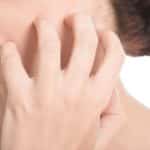Treatments for Blister Problems
Whether they occur as result of ill-fitting shoes or a burn on the hand while cooking, blisters are painful and can disrupt your daily activities. These raised, fluid-filled lesions are generally not a serious health concern unless they cover large areas of the skin or don’t heal; however they should be treated properly. Here we take a look at how to avoid getting blisters and what to do if you experience on anyway.
What Causes a Blister?
Most people experience blisters from time to time. The cause can be something as simple as a shoe that doesn’t fit well to the chickenpox (varicella) virus. The list of causes includes:
- Friction due to shoes do not fit properly
- Exposure to cold or freezing temperatures
- Burns that are caused by contact with chemicals, heat, electricity, or the sun
- Spider bites from the brown recluse or other specific types
- Medical conditions such as autoimmune diseases, impetigo, chickenpox, shingles, bedbugs, hand-foot-and-mouth disease, and herpes simplex virus
- Allergic reactions that lead to contact dermatitis
Generally blisters begin as small pink or red spots that tend to tingle or burn. As the blister gets worse, it becomes whiter and begins to fill with fluid, forming a bump on the skin.
Prevention of Blisters
Taking steps to guard against blisters is one of the best ways to avoid this problem in the first place. For friction blisters, which commonly occur on the heels or other areas of the feet, it is important to wear well-fitted shoes for daily activities as well as exercise and sports. When shoes fit well, the toe box should provide ample room for your toes and the ball of your foot. If you can’t wiggle your toes, the shoe may be too snug. Also make sure that your heel fits securely in your shoe. When it rubs against the inside of your shoe, the abrasion can lead to painful blisters.
Another common blister site is the hand. By wearing gloves when you are gardening, doing heavy chores, and especially when dealing with anything hot – such as while baking or cooking – you can help to prevent blister formation. Keep in mind that certain plants and chemical substances can cause blistery rashes. Always make sure to avoid contact with poison ivy, oak, and sumac.
Treatment of Blisters
For blisters caused by acute or chronic viral infections, it is important to seek appropriate care for the underlying medical issue. Your physician will provide specific advice for how to handle the blisters depending on your condition. Do not attempt to pop or eliminate a blister when you notice it. In some instances, you may cause scarring or spread an infection.
When blisters are caused by trauma or friction, it is still advisable to leave the blister alone so that it can heal. If you notice that the blister begins to look yellow or green, this may be a sign of infection, and a dermatologist should examine the area. Other signs of infection include increased redness and pain.
The best treatment for blisters is to allow them to heal in their own time. If you have one that shows signs of infection or limiting your daily activities, it is important to seek professional care. Remember that the fluid in a blister is there to protect the affected area while new skin forms.





